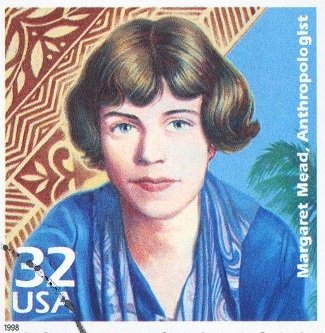

Anthropology theories serve as analytical tools for comprehending, illuminating, and foretelling a certain subject. Theories aid in guiding our thoughts and offer a standard framework within which individuals may operate.

Generalizations regarding culture or society and the interpretation of ethnography are the topics covered by the anthropological theory. The hypothesis represents an anthropological way of thinking. The hypothesis is also the foundation of the field of anthropology. philosophies ranging from postmodernism to classical evolutionism. Theoretical connections exist among the subjects of social-cultural anthropology, particularly institutions, marriage, families, and kinship, as well as economic, political, and religious anthropology
The unilinear evolutionists believed that cultural parallels or similarities emerged as a result of the psychic unity of humanity. This implies that everyone goes through the same process of development, along with their respective communities. The subsequent generation of anthropologists, who emphasized gathering primary data through fieldwork, referred to proponents of the social evolution hypothesis as "Arm Chair Anthropologists." It neglected to account for cultural differences. These theories' comparative approach only served to highlight how superior the anthropologist's society was by interacting with other societies.
The subjective interpretations of classical evolutionism are openly rejected by neo-evolutionism, which emphasizes the value of empirical data. Neo-evolutionism also rejects the determinism and social progress tenets of traditional evolutionism and substitutes probability and environmental factors in their place.
An anthropological school of thought known as historical particularism was founded by Franz Boas and his disciples who emphasized a people's integrated and distinctive way of life in the study of culture. A paradigm in anthropology known as historical particularism asserts that each culture and society should be characterized and understood in terms unique to it. It emerged as a counterargument to the social evolution idea, which maintained that various civilizations had acquired varying levels of development. Historical particularism aims to illuminate the roots of culture and how it affects people, much like the idea of social evolution.
The study of the geographic distribution and migration of cultural features by diffusionists, who rejected the theory of unilinear evolution, revealed that cultures are patchworks of qualities intertwined with various origins and histories. Diffusionists contend that diverse cultural complexes emerge throughout time in various regions of the world and eventually spread to other regions, primarily as a result of migration. Thus, they asserted that culture has developed over time not as a result of evolution but rather as a result of cultural transmission brought about by migration and intercultural contact.
Slawomir Malinowski British anthropologist Malinowski asserted that civilization is supported by all facets of culture. He added a slight twist, though. It was more individualized or personal for him. According to him, culture developed as a result of needs among people. Once these requirements are satisfied, the individual is then able to contribute to society. He valued the individual over society. Unfortunately for Malinowski, more contemporary anthropologists have largely rejected most of his views.
Cultural anthropology is a field of anthropology that Strauss helped establish. According to this, relationships within the structure can help us better understand a culture, which can be thought of as a society. To comprehend this culture, one should examine the components that make it up. Some of these components could be interpreted in light of family patterns, mythological motifs, artistic creations, etc. The study of kinship is what made him famous. Strauss defined, the fundamental structure of kinship—brother-sister, husband-wife, father-son, and mother's brother-son—are the sister's basis for all known kinship systems.
Radcliffe-Brown once more looks to biology to explain how then architecture and function relate to one another. The pieces of an organism are arranged in an organized manner to form the organism's structure, and each part has a specific function. The operation of the social structure can be characterized as the social life of a society. According to Radcliffe-Brown, the distinction between structure and function can be used to investigate both processes of change and continuity in social life's various forms.
Generalizations concerning any subject area, in the opinion of Radcliffe-Brown, fall into one of two categories −
Broad generalizations of popular belief
Generalizations that have been proven through a systematic analysis of data provided by methodically made accurate observations. This specific generalization is also referred to as a scientific law.
The relationship between childrearing practices and human behavior in various countries was explained by the idea of Culture and Personality. This theoretical school has two basic ideas. One discussed how culture and human nature relate to one another. The other discussed how culture and personal characteristics relate to one another.

Margaret Mead developed the methodology known as Culture and Personality. She believed that a person is a product of their society, which shapes them in particular ways. The person absorbs these cultural qualities as a baby, and as they progress through life, they are reinterpreted and strengthened. In essence, cultural differences are often passed down through infancy and account for the disparities between persons in various communities. Humans develop to be human through this dynamic and intricate connection between the individual and civilization.
Anthropologists showed a strong interest in studying various islands and tribes. Over time, anthropology's scope expanded. The philosophical advancements of their eras affected anthropologists as well. They were therefore affected by structuralism, structural-functionalism, and evolutionism. A variety of adjustments have also been made to ethnographic techniques. Each of these developments spurred new discussions and opened up new avenues for anthropological research.
Q1. Who is regarded as the “Father of Anthropology”?
Ans. The father of anthropology is considered to be Franz Boas. By adopting a research-first approach to developing hypotheses, he was the first to apply the scientific method to anthropology.
Q2. Why is it vital in anthropology to have theories?
Ans. The approaches that certain research may favor are influenced by many theories. These ideas guide anthropologists' interpretation of their findings, the overall structure of their study, and their interactions with the subjects they are researching.
Q3. What does "neo-cultural development" mean?
Ans. The concept was by Tarkett invented to describe contemporary socioeconomic and cultural changes and how they affect architecture and interior design.